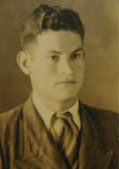by Dana Guest
 Gloria Molina
Gloria Molina
Gloria Molina, the lone Hispanic serving on the Los Angeles County Board of Supervisors, voiced reservations to Hispanic Link News Service in a June 4 interview about the advisability of reshaping the Board’s district lines to create a second “Hispanic-majority” seat. A request to do so is now under consideration by the U.S. Department of Justice.
Presently, in a county where nearly 50 percent of the 10 million residents are Hispanic, the board includes Molina, Yvonne Burke, who is African American, and three white males.
Blacks, who made up 12.4% of the county’s population in 1980, now stand at 9.8%, according to the Census Bureau figures.
Responding to Hispanic Link reporters following her address to 175 guests attending a “Latino Leaders” luncheon in Washington, D.C., Molina expressed concern that shifting district lines could eliminate black representation on the board.
“One of the most dangerous things to us would be to exclude the African-American community,” said Molina.
The board manages an annual budget of $22 billion, larger than that of about 80 percent of U.S. states. Each of the five districts contains more than two million residents.
Molina’s concern is challenged by Alan Clayton, equal opportunity director for the Los Angeles County Chicano Employees Association, which has filed a federal voting rights complaint with the U.S. Department of Justice.
“We enhance the ability of Latinos, but we do not undercut the ability of African Americans to elect candidates where they currently have electoral power,” Clayton stated.
Supervisorial District #2, now served by Burke, who is retiring this year, has a black voting-age population of 29.5 percent. Two other African Americans who are competing in a November runoff to replace her.
Among those supporting the administrative complaint are redistricting expert Leo Estrada, associate professor of Urban Planning at UCLA, and Attorney Armando Durón, who had served back in 1991 on the county board’s redistricting committee as an appointee of Molina. Now a co-counsel in the administrative complaint, he said he was “shocked” by Molina’s comments. The proposed districts have carefully avoided reducing black infl uence in District 2, he said.
A pair of demonstration maps proposed by the LACCEA offer a 30.9 percent and a 30.5 percent black voting-age population in the reshaped district, according to Clayton.
“Alan Clayton has made a compelling case to show that African Americans are not affected by the proposal presented,” Joaquín Avila, a national expert on voting rights and redistricting who fi led a 68-page legal brief on behalf of the administrative complaint, told Hispanic Link.
Clayton and the LAC-CEA submitted their intervention request to the Department of Justice in February of 2003 and, in spite of repeated status requests, are still waiting for an answer.
Molina called another proposal to expand the Board of Supervisors to nine members “a good idea because it would allow for better representation of the entire community.”
The majority of board members opposed it, claiming it would be too costly. Board members like the power they have, Clayton responded. “They don’t want to give it up.”
(Dana Guest is a reporter with Hispanic Link News Service in Washington, D.C. Reach her care of editor@hispaniclink.org).








